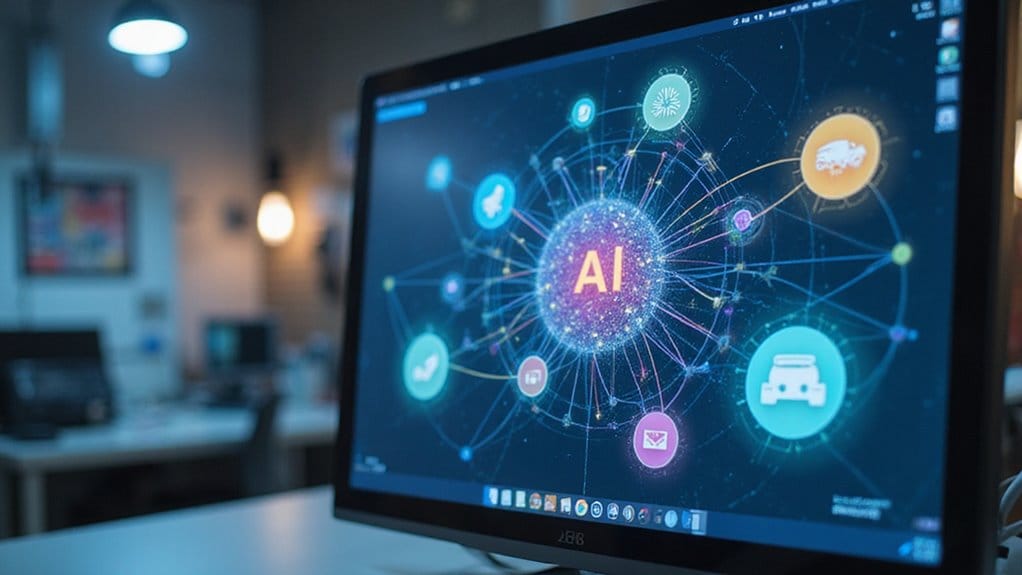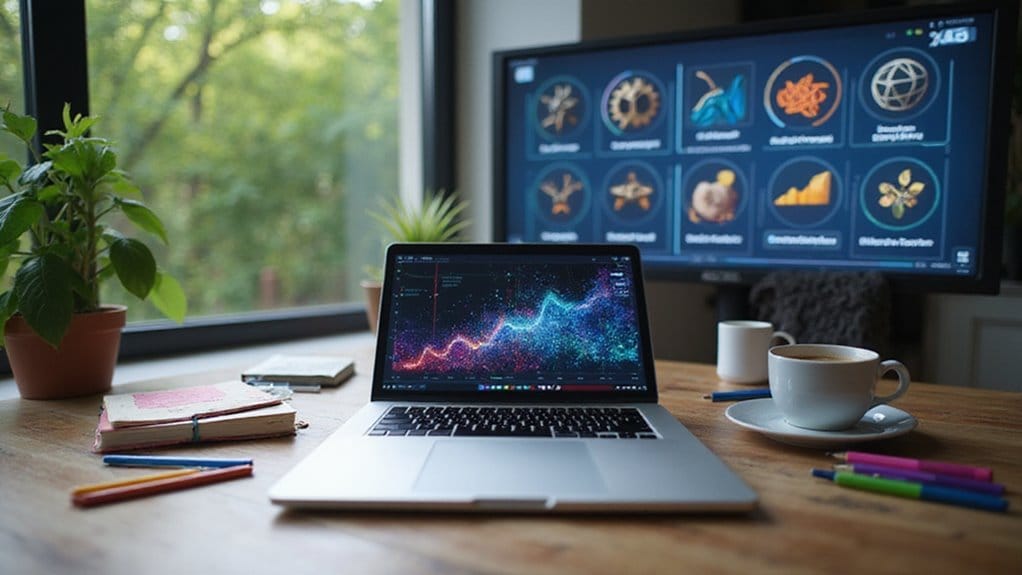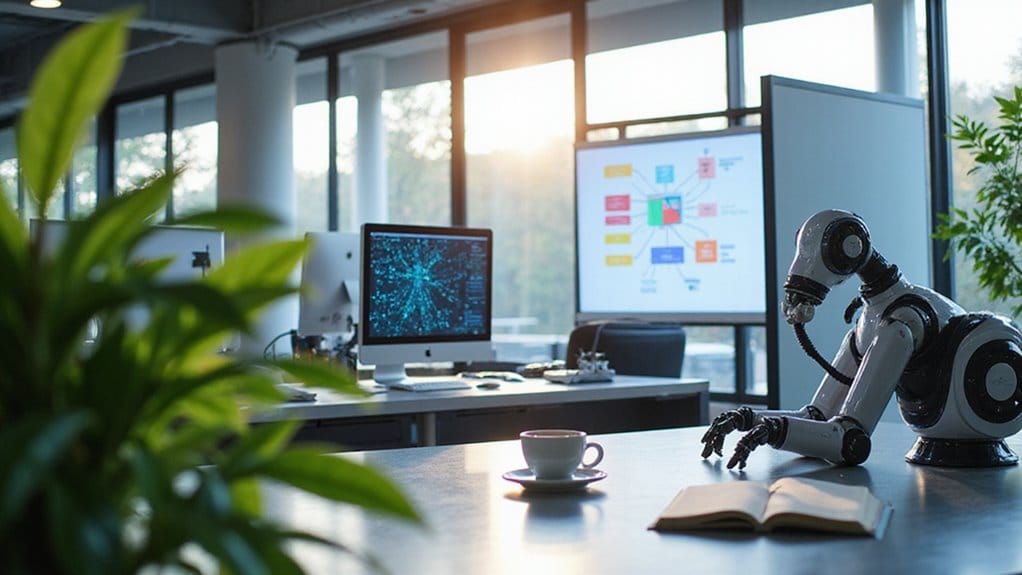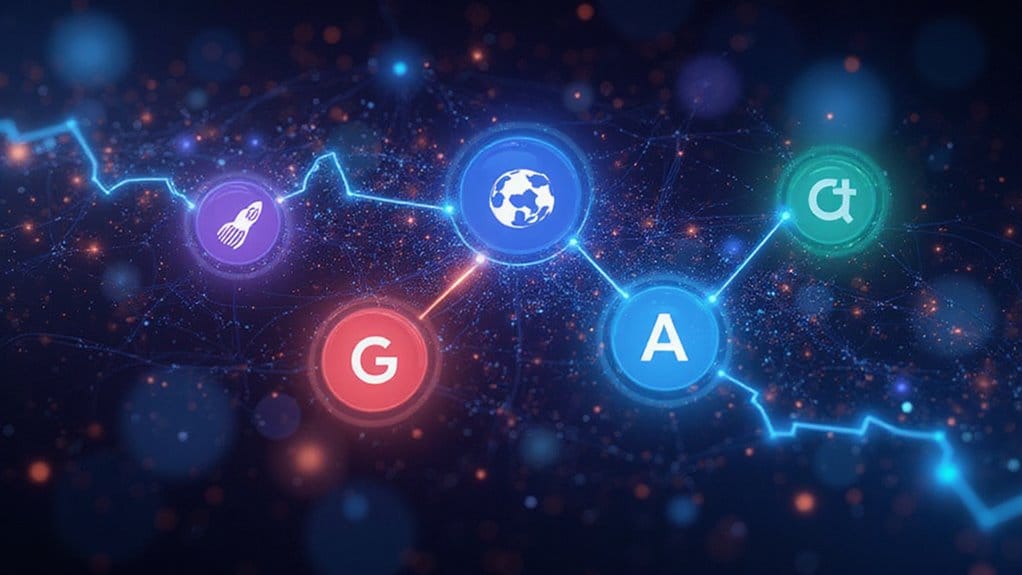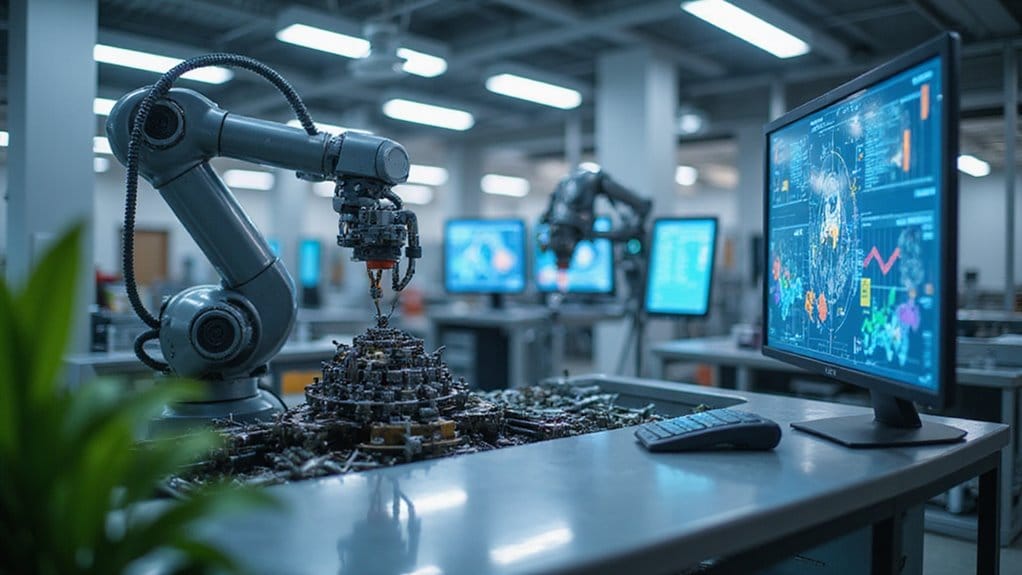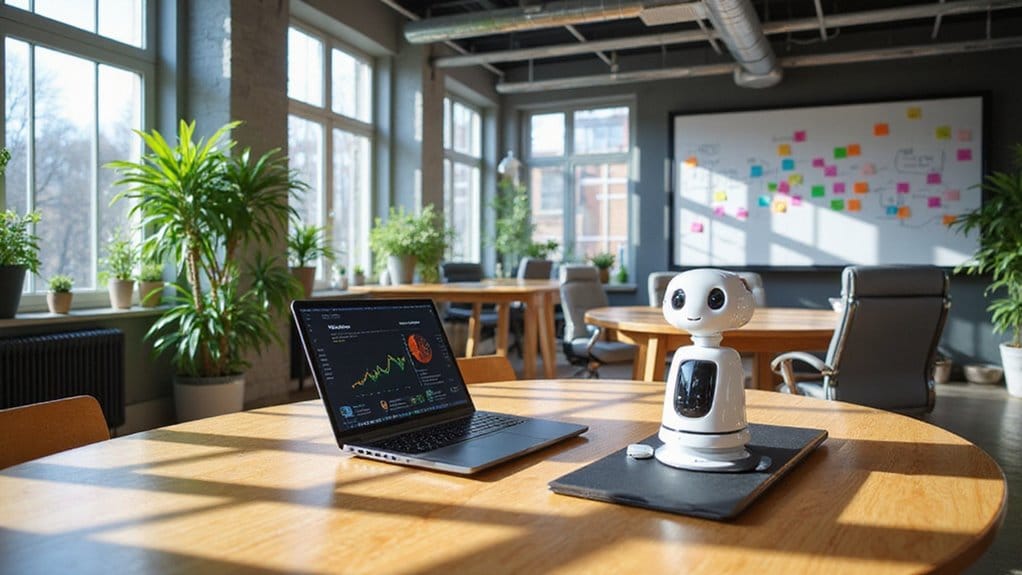Image identification with AI is like teaching a really smart dog to recognize your favorite squeaky toy. It uses algorithms and deep learning to analyze images, spotting patterns and distinguishing objects. Essential data sets and careful image labeling are the foundation. This tech powers everything from healthcare diagnostics to security systems that keep us safe. Think of it as having a superhero for your photos. Want to uncover more about how this tech works? There’s much more to explore!
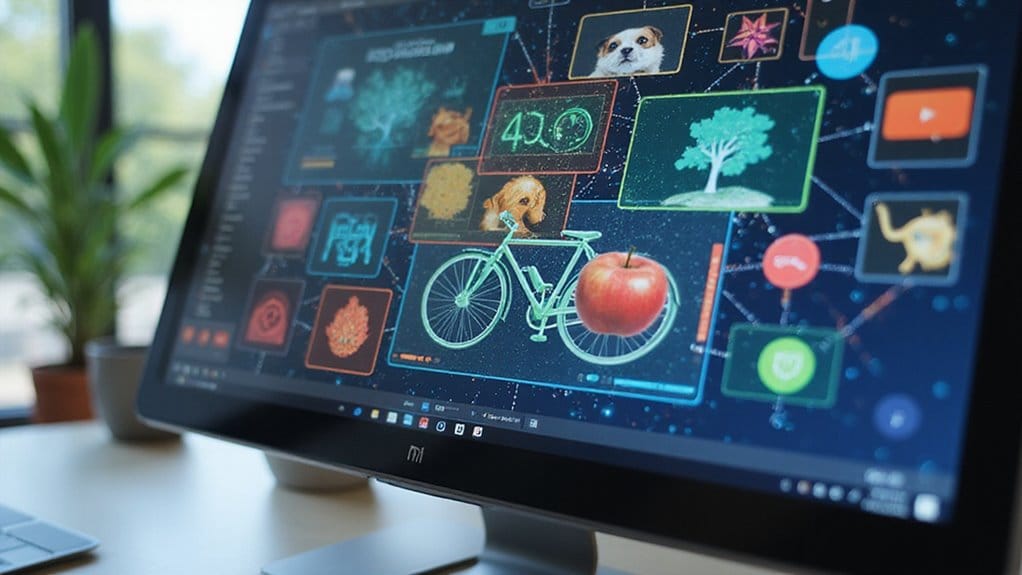
In a world where every picture tells a story, image recognition with AI is the savvy detective, piecing together clues faster than a seasoned investigator. This technology identifies and categorizes objects in images, bringing a touch of brilliance to our daily lives. Imagine a computer that can recognize your face or pinpoint the dog in your photo! That’s the magic of artificial intelligence at work.
How does it do this? Well, it employs object detection and facial recognition techniques, which are powered by deep learning and computer vision. Yes, that sounds fancy, but it’s really about teaching machines to see like humans. Think of Convolutional Neural Networks (CNNs) as the brains of the operation, helping these systems to learn from patterns. Additionally, these systems leverage advanced algorithms to enhance their accuracy and efficiency in recognizing complex images.
But wait! It doesn’t stop there. To make everything run smoothly, AI needs a solid foundation. Start by gathering a high-quality dataset. It’s like feeding a hungry toddler—if you give it junk, you’ll get junky results. Annotate those images carefully, marking what’s what. Then, let the computers work their magic through training, adjusting their parameters until they can identify faces and objects with impressive precision. Deep learning methods excel in performance and flexibility for image recognition tasks, making them preferable over traditional methods. Additionally, successful AI image recognition systems often utilize cutting-edge deep learning techniques for enhanced adaptability and effectiveness.
Now let’s talk applications. In healthcare, AI scans medical images for signs of disease. In security, it identifies intruders faster than you can say “cheese.” And in smart cities, it monitors crowd movements—keeping everyone safe while saving time and money.
But don’t forget, the training process requires significant computational power. You can’t just whip up a model on your home computer; you need robust resources. Think of it as preparing for a marathon—proper training and equipment are essential.
As technology advances, expect image recognition to keep evolving. With a projected market growth to $86.3 billion by 2027, it’s clear that AI will continue to play a pivotal role in recognizing what it sees. Buckle up; the future is bright!
Frequently Asked Questions
How Accurate Is AI Image Identification Compared to Human Recognition?
When it comes to accuracy comparison, AI image recognition often trumps human capabilities—especially with specific objects like dog breeds.
However, don’t forget human biases; they can cloud judgment in unfamiliar contexts.
While AI can process images at lightning speed, humans excel in nuanced recognition.
So, remember: rely on AI for straightforward tasks, but don’t toss your own judgment aside.
Embrace the blend of both worlds for the best results!
What Types of Images Can AI Systems Recognize?
AI systems can recognize a stunning variety of images, from medical images that help diagnose diseases to wildlife photos capturing the beauty and danger of nature.
They spot objects, analyze faces, and even identify environments. Think about it: AI isn’t just a fancy camera; it’s your tech-savvy friend who knows what’s what.
How Does Lighting Affect AI Image Identification Accuracy?
Lighting techniques play an essential role in AI image identification accuracy.
Poor lighting? Expect decreased image contrast and, inevitably, errors. Shadows and glare obscure important features, leading to misidentification.
Want better results? Guarantee well-lit environments. Use adaptive algorithms to tackle varying conditions—think of them as your AI’s trusty sidekick.
Can AI Identify Emotions From Facial Expressions?
Absolutely, AI can identify emotions from facial expressions through emotion detection and facial analysis.
It uses smart algorithms to decode expressions—like a detective solving a mystery! First, it captures a face, then analyzes key features.
Think of it as reading a mood ring, but with a lot more data. However, beware! Lighting and angles can throw it off.
What Are the Privacy Concerns With AI Image Identification?
AI image identification raises serious privacy concerns, particularly around data security and consent issues.
Imagine your photos being scooped up without your say-so! Yikes, right? This can lead to unauthorized surveillance and profiling.
To protect yourself, demand transparency from companies—ask how they handle your data. Stay informed about your rights under laws like GDPR.
